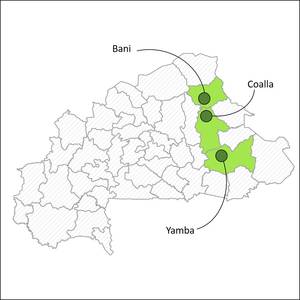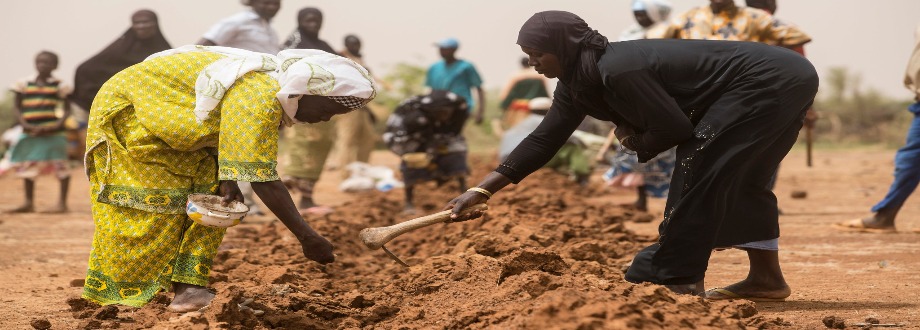Burkina Faso
More than two billion hectares (ha) of land are degraded worldwide, including in the Sahel. To face this problem, the implementation of forest and landscape restoration (FLR) activities aims to transform degraded or barren lands into healthy and fertile landscapes where local communities, ecosystems and other stakeholders can coexist within the framework of sustainable land management (SLM).
In the Sahel, populations depend heavily on the exploitation of natural resources: extensive pastoralism, rain fed food crops, collection of non-timber forest products (NTFPs) for food, pharmacopoeia and firewood for cooking. These natural resources are subject to strong biophysical pressures such as low and erratic rains, high temperatures, high aridity, often poor and easily degradable soils, etc. All of these are further exacerbated by anthropogenic pressures: demographic boom, climate change, lack of public safety and weak governance.
EXPECTED RESULTS
The project includes actions at the municipal and national levels in Burkina Faso and actions at the subregional and global levels. The project foresees:
- local actions implemented in an innovative and decentralized manner with rural communes as part of the Great Green Wall Initiative for the Sahara and the Sahel;
- sub-regional actions (CILSS/ECOWAS area) in support of planning, biophysical and socio-economic assessment of impacts, sub-regional monitoring and evaluation, sub-regional capitalization/dissemination; and
- global actions in terms of global monitoring and evaluation, promotion, and identification of private funding opportunities.

IMPACTS
- municipal level: reinforcement of communal councils and local stakeholders in planning and logistic capacities; financing and monitoring-evaluation of the actions of FLR/SLM and development of income-generating activities, with the opening of dedicated municipal councils on these two themes (target of 500 hectares for every Commune where restoration activities are implemented);
- national level: capacity building for FLR/SLM policy, creation of a database of past SLM actions, creation of FLR/SLM Code of Practice, development and dissemination of educational materials, creation of a monitoring and evaluation manual for the actions of FLR/SLM via the National Coordination of the Great Green Wall in Burkina Faso;
- sub-regional level: satellite mapping to monitor the evolution of landscapes at national and regional scales; cost/benefit assessment of the FLR/SLM; knowledge sharing; and
- global level: knowledge sharing and advocacy; attracting private financing for FLR/SLM.
For more information of FLRM activities, click here:
- FLR and SLM in the Sahel
- The launch of the project "FLR and SLM in the Sahel"
- First Global Steering Committee of the project "FLR and SLM in the Sahel"

